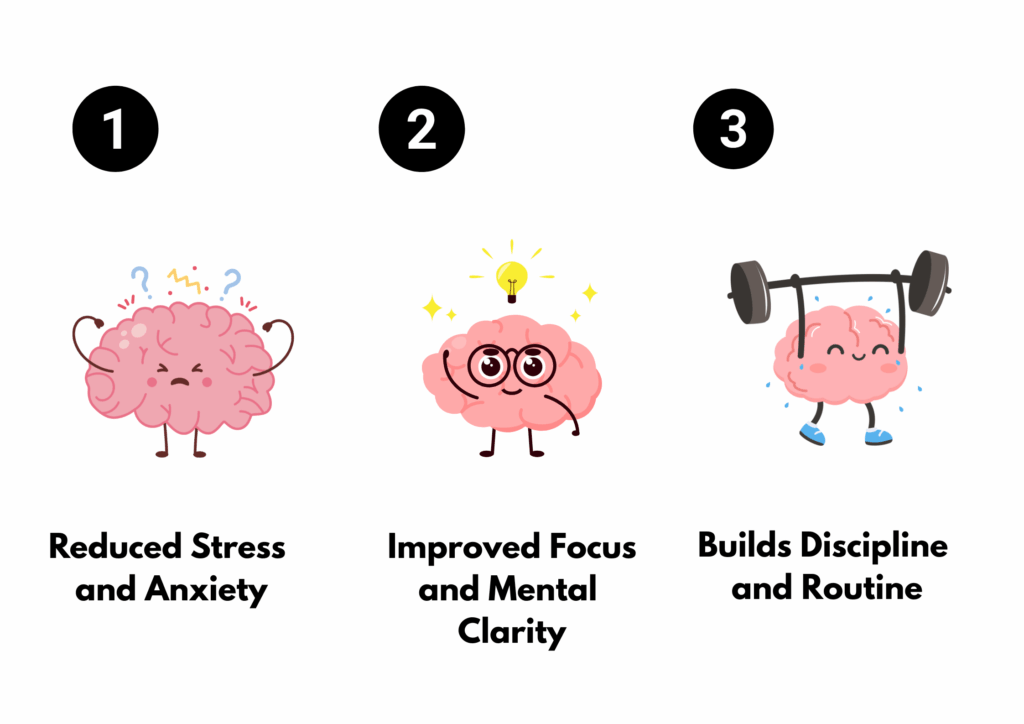
Healthy and consistent study habits is the most important factor in a student’s learning journey. After working with 1000’s of students, we noticed a pattern between students who get the top grades and students who do average.
This Guide is going to be long, but it will cover every single tiny detail that you need to pay attention to, to ensure your child is forming the best study habits.
This guide is broken down into 5 key steps:
For each of these sections, we have included the Psychological benefit, Top tips on how to improve and useful tools.
An Organised study space and room is an Organised Brain.
Here are the psychological benefits of being organised:

Top Tips to Improve:
This step also links into Step 2, Environment. Having a Messy desk can lead to wasted time, looking through piles of books for the correct resources, spending 10 minutes looking for a pen or even a post it note with your laptop password on it.
It’s crucial to have an organised desk.
These are my top 3 Amazon products that will help you keep your desk clean and tidy.
Desk File Organiser – Great for keeping all the essential tools in one place
Expandable Desk Shelves – Great for some extra storage and a minimalistic vibe to the room.
Magnetic Cord Organisers – Wires make things messy, especially when you are trying to charge all your devices at once.
2. Organise your Notes
The biggest waste of time we have seen is students rewriting notes over and over again simply because they lost their old set. Your Notes should be written out in full ONCE, to effectively retain information this is the ideal journey you should follow:

Creating in-depth notes
This is when you originally learn new content, you ideally should create these notes within the first week of learning new content. It is also important to keep all your notes in one place for each subject so that you can easily comeback to it when it comes to revision.
Best practise would be to use a new Notebook for each subject (and maybe even use different coloured notebooks for each subject)
12 Different coloured notebooks for each subject + Spiral book for easy use.
If you don’t like using notebooks you should separate each subject out into files, this way you’ll again have control over where your notes are stored in a systematic manner.
6 Ring Binders with sheets (so that you don’t need to hole punch your beautiful notes)
Creating Flashcards
Once you’ve made your intial notes, a month later you should start making flashcards, these are super handy when it comes to active recall and quick revision sessions.
On one side of the card, you should have a content related question and on the flip side you should have the answer. The best way to use this is as a warm up or cool down activity when you are revising specific topics or subjects.
Another way to use flashcards is condensing one subtopic onto one card, this can come in handy when you are using the blurting technique. You can use the flashcards to double check that you haven’t missed anything.
6 Colors Flash Cards with Rings, Flashcards for Studying
Blurting Technique
The Blurting Technique is the SINGLE best method to actively recall content from the curriculum.
The Blurting Technique is when you take a Topic and then use a whiteboard or a scrap piece of paper to write out every bit of information related to that topic. You can then compare what you have written with your full notes or Flashcards to see what you missed out. This technique is particularly useful for, GCSE Science, GCSE English, A Level Biology, A Level Chemistry, A Level Physics and A Level Economics.
Whiteboard
Whiteboard Pens + Cleaning Tools
Exam Practise
This one is self explanatory, Here are the recommend workbooks for GCSE and A Levels:
GCSE Maths Edexcel Workbook – Higher Level
GCSE Maths Edexcel Workbook – Foundation Level
IGCSE Maths Workbook + Revision
GCSE Combined Science AQA Exam Practise Workbook
New GCSE Combined Science AQA Higher Complete Revision & Practice
© 2024 SmartX Tutoring | Privacy policy | Cookies | Terms & Conditions